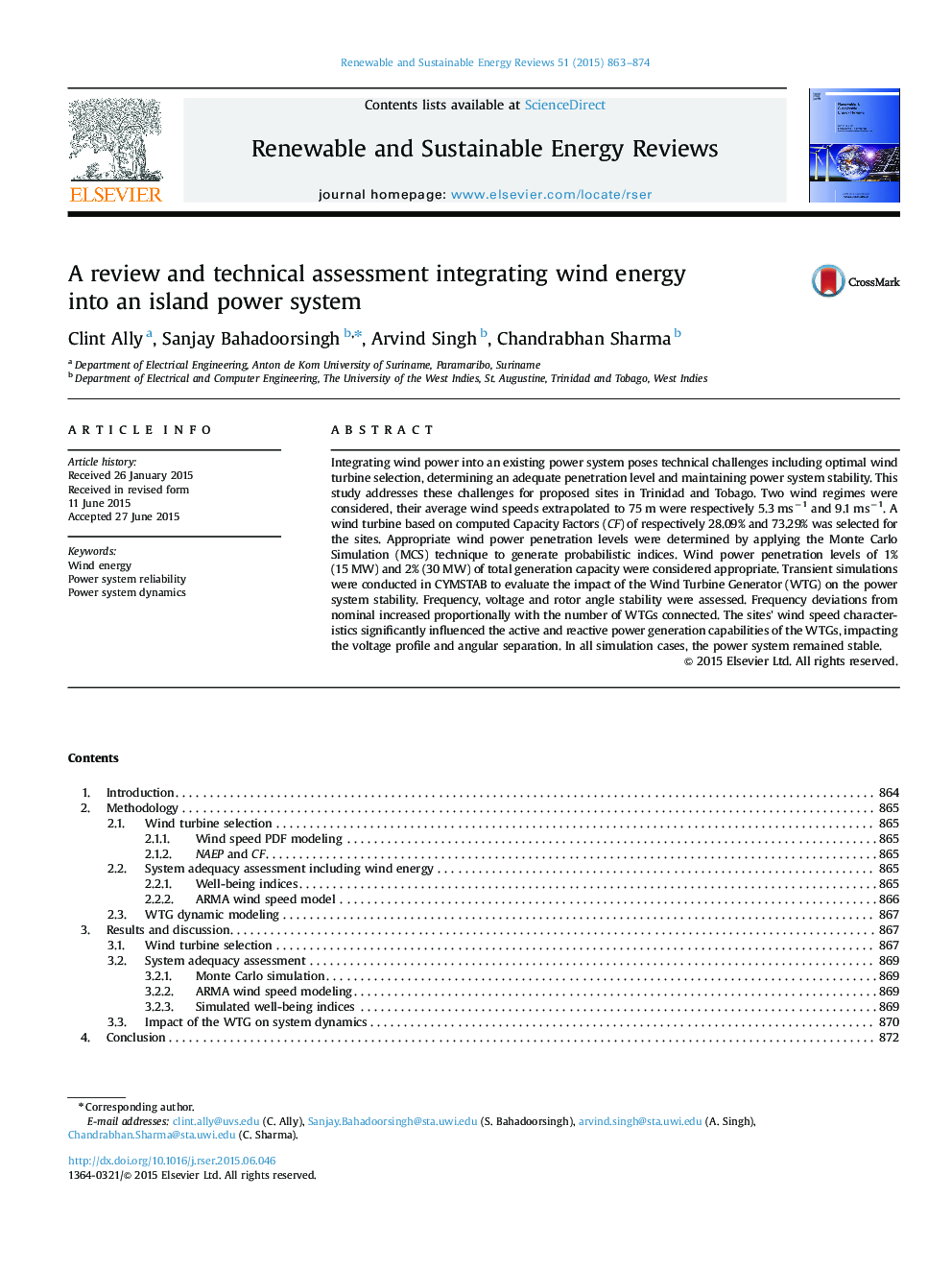| Article ID | Journal | Published Year | Pages | File Type |
|---|---|---|---|---|
| 8115833 | Renewable and Sustainable Energy Reviews | 2015 | 12 Pages |
Abstract
Integrating wind power into an existing power system poses technical challenges including optimal wind turbine selection, determining an adequate penetration level and maintaining power system stability. This study addresses these challenges for proposed sites in Trinidad and Tobago. Two wind regimes were considered, their average wind speeds extrapolated to 75 m were respectively 5.3 msâ1 and 9.1 msâ1. A wind turbine based on computed Capacity Factors (CF) of respectively 28.09% and 73.29% was selected for the sites. Appropriate wind power penetration levels were determined by applying the Monte Carlo Simulation (MCS) technique to generate probabilistic indices. Wind power penetration levels of 1% (15 MW) and 2% (30 MW) of total generation capacity were considered appropriate. Transient simulations were conducted in CYMSTAB to evaluate the impact of the Wind Turbine Generator (WTG) on the power system stability. Frequency, voltage and rotor angle stability were assessed. Frequency deviations from nominal increased proportionally with the number of WTGs connected. The sites׳ wind speed characteristics significantly influenced the active and reactive power generation capabilities of the WTGs, impacting the voltage profile and angular separation. In all simulation cases, the power system remained stable.
Related Topics
Physical Sciences and Engineering
Energy
Renewable Energy, Sustainability and the Environment
Authors
Clint Ally, Sanjay Bahadoorsingh, Arvind Singh, Chandrabhan Sharma,
